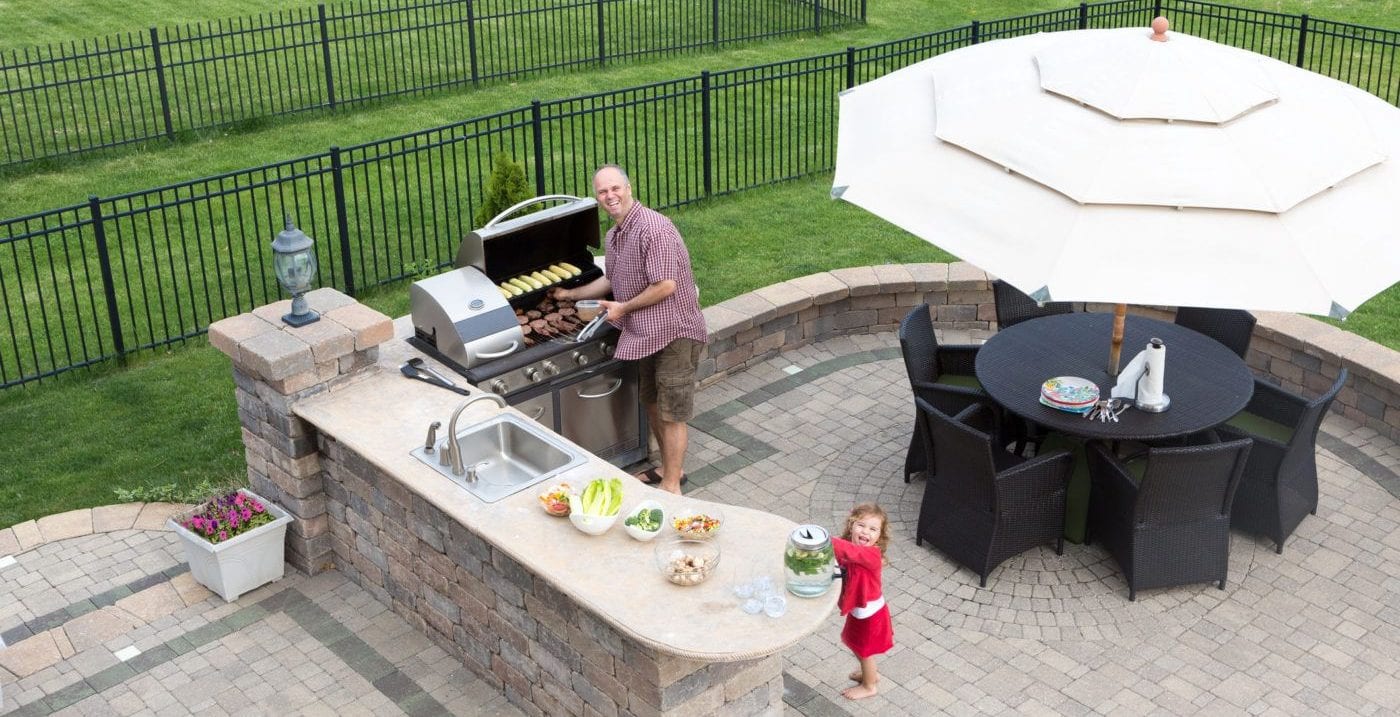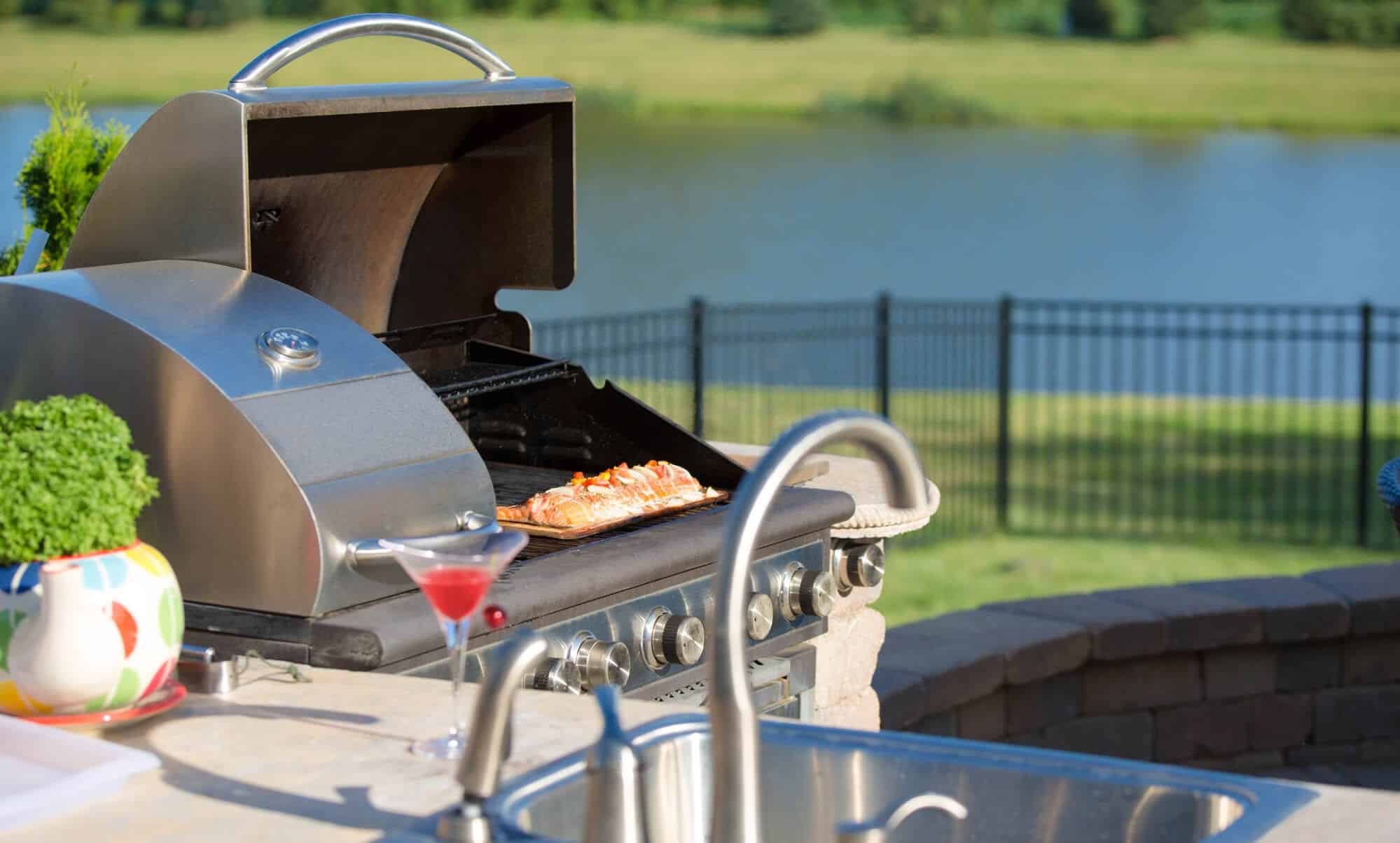Homeowners in both warm and cold areas are choosing to install outdoor kitchens on their properties. Outdoor kitchens provide homeowners with a variety of benefits from extending their entertaining space to adding more character and aesthetic appeal to their property overall. Deciding to add an outdoor kitchen to your property can be intimidating, but there are various tips and resources available today to make the process simple and stress-free for you.

Extend Your Entertaining Space
Creating an outdoor kitchen space for your home is an excellent way to extend your existing living and entertaining space. While developing your layout and design plan, it’s essential to make the most of your new space by considering what seasons you plan on using the outdoor kitchen space. Take the various features into consideration that you can incorporate to make it comfortable for both household members and guests. Many homeowners with an outdoor kitchen also enjoy creating a space with similarities to their indoor kitchen, so a sense of continuity exists throughout their entire property. When planning for the seasons, it’s essential to consider the following:
- Shade: Provide shade for household members and guests in the hot summer months by incorporating trees, an awning or pergola, and a patio umbrella for seating areas.
- Shelter: Any form of shelter can provide comfort during hot or rainy weather. Adding umbrellas, awnings, or pergolas to your design will allow your space to be used and enjoyed regardless of the weather that may be occurring.
- Warmth: If you live in a cold part of the United States or have chilly fall seasons, building your own firepit or installing an outdoor heater or radiant heat may be beneficial.
Accounting for each of these factors during the design process is vital. These factors will help make your outdoor kitchen space continually welcoming, comfortable, and cozy for household members and guests, no matter the season or weather conditions.
Consider Your Location
Before really diving into your outdoor kitchen design, it’s encouraged to consider the climate your home is located in, as this can have a significant impact on the materials, appliances, and layout you choose. Along with the environment, it’s recommended to select a design that fits with and complements the surrounding landscape and architecture. Homeowners are encouraged to select colors and textures that extend the preexisting style. Depending on your location’s climate, many factors can create unusual obstacles for homeowners to consider in their outdoor kitchen design process:
- Fluctuating Temperatures: Many areas across the United States experience frequent temperature changes, and some can be drastic. For areas that experience extreme weather, it’s recommended to avoid tile and stone countertops as they can crack. Cabinetry, PVC, and non-stainless-steel fixtures are other design characteristics to consider as fading and warping can occur.
- Saltwater or Sea Air: If you’re in a coastal region, saltwater and sea air can damage kitchen cabinet materials through corrosion. Powder coat finishes help add a protective layer to many surfaces included in an outdoor kitchen.
- Seasons: Adding an outdoor kitchen to your property allows for more entertainment space, meaning you’ll want to use it as frequently as possible. Adding a transitional exterior room will help provide shade and shelter from changing weather while still having access to your outdoor entertainment area.
Reliable Appliances and Materials
Outdoor kitchens are continuing to grow in popularity, especially in warmer parts of the United States. Due to the rise in popularity, there is a wide variety of appliances available on the market today. When determining what appliances you would like for your outdoor kitchen, it’s crucial to account for what appliances you have inside and how similar you want your outdoor kitchen to be. Additionally, you will have to look for outdoor appliances as indoor appliances will work for a shorter amount of time as they’re not built to withstand interaction with the elements. There are many different outdoor kitchen appliances available for homeowners to choose from:
- Grills and Smokers
- Refrigerator
- Kegerator
- Ice Maker
- Utility Drawers
- Sinks
- Side Burners
- Dishwasher
When choosing the appliances and materials for your outdoor kitchen, it’s vital to select items that are tough enough to withstand the elements, low maintenance, and easy to clean. Your outdoor kitchen will likely encounter an array of weather conditions, from heavy sleet and rain to snow and extreme temperatures. An outdoor kitchen comes with quite an investment, so choosing durable and tough materials and appliances will leave you happy with your addition for years to come. Additionally, if you’re hoping to entertain frequently, you may want to consider adding other entertainment features such as a bar, wine fridge, or built-in speakers.

Layout and Design
After establishing the basic layout of your outdoor kitchen and the appliances and materials, give some special attention to design elements and preferences. Homeowners across the United States add unique features to their indoor kitchens to add character and aesthetics to their homes. Just like indoor kitchens, homeowners can have fun with an outdoor kitchen as well when it comes to design. Garden decorations, potted plants, and cushioned seating can be added to create a welcoming, cozy space. Along with adding unique elements to your layout, it’s critical that you also keep functionality in mind. Indoor kitchens typically have four functional zones: cold, hot, wet, and dry. To create a truly functional outdoor kitchen, you must organize your layout to allow for space and easy accessibility for each of these areas.
Budget-Friendly
It’s easy to get excited and carried away about your new outdoor kitchen design with all the different appliances, design elements, and additional features available on the market today. However, homeowners must take the time to determine a cost-effective budget fitting to their needs and stick to it as spending can quickly get out of hand.
- Quality of Materials: Give special attention to the materials you’re choosing as higher quality finishes and features can cost more. However, it may be beneficial to go with higher quality options for some elements and appliances, as these are likely to last longer.
- Utilities: Don’t forget about utilities when planning your budget. A complete outdoor kitchen can’t happen without installing electricity, gas, running water, and more. It’s crucial to include these costs in your budget, so there are no surprise charges.
- Technology Needs: If any of your appliances are WiFi compatible or if you want the ability to play music in your outdoor kitchen, the cost for additional WiFi and network installation should be incorporated into your budget as well.
Take your time when creating your budget, as it’s essential to include every element of your kitchen. This will give you an estimate of how much your project will cost, how much you can spend, and potentially help shed light on any areas you can cut down on if you’re finding your original design to be over budget.
Start Planning Your Outdoor Party
Installing an outdoor kitchen on your property is an exciting addition, and once it’s complete, you’ll want to plan a party right away. Create your layout and design with professional help or on your own, but make sure to account for your budget, appliances, and materials. You want items that will last while adding to your home’s aesthetic properties. By keeping the tips mentioned above in mind during your design process, we guarantee you’ll create a space that can be enjoyed by homeowners and guests for years to come.
